Patrice Boizumault
Tractability and Decompositions of Global Cost Functions
Jun 30, 2016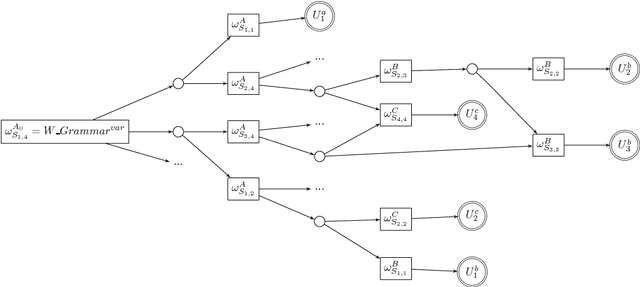
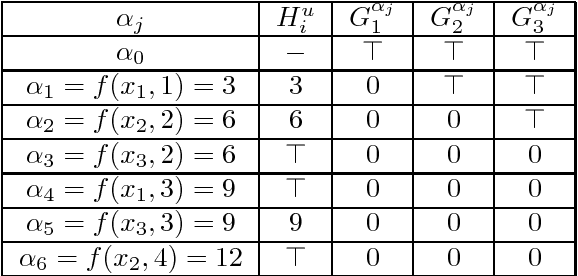
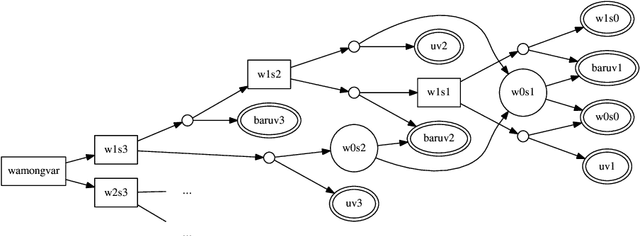
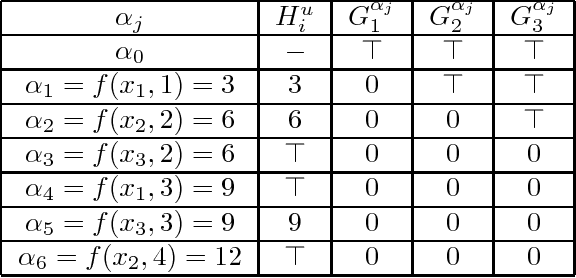
Abstract:Enforcing local consistencies in cost function networks is performed by applying so-called Equivalent Preserving Transformations (EPTs) to the cost functions. As EPTs transform the cost functions, they may break the property that was making local consistency enforcement tractable on a global cost function. A global cost function is called tractable projection-safe when applying an EPT to it is tractable and does not break the tractability property. In this paper, we prove that depending on the size r of the smallest scopes used for performing EPTs, the tractability of global cost functions can be preserved (r = 0) or destroyed (r > 1). When r = 1, the answer is indefinite. We show that on a large family of cost functions, EPTs can be computed via dynamic programming-based algorithms, leading to tractable projection-safety. We also show that when a global cost function can be decomposed into a Berge acyclic network of bounded arity cost functions, soft local consistencies such as soft Directed or Virtual Arc Consistency can directly emulate dynamic programming. These different approaches to decomposable cost functions are then embedded in a solver for extensive experiments that confirm the feasibility and efficiency of our proposal.
A global Constraint for mining Sequential Patterns with GAP constraint
Nov 26, 2015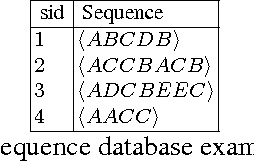
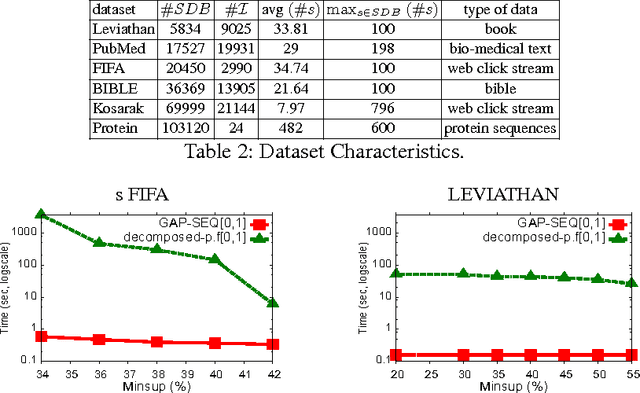
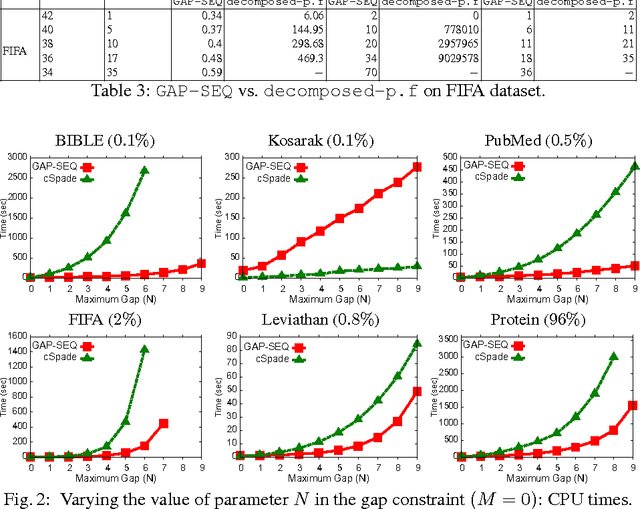
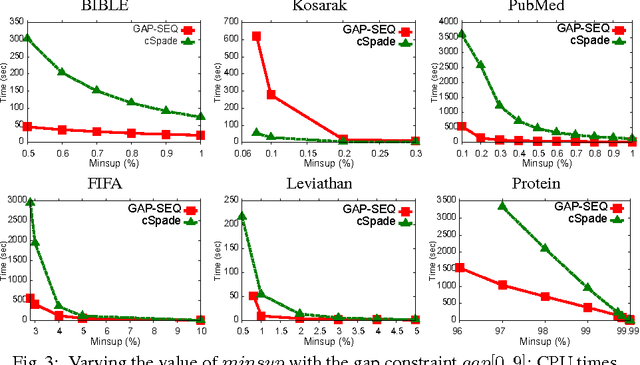
Abstract:Sequential pattern mining (SPM) under gap constraint is a challenging task. Many efficient specialized methods have been developed but they are all suffering from a lack of genericity. The Constraint Programming (CP) approaches are not so effective because of the size of their encodings. In[7], we have proposed the global constraint Prefix-Projection for SPM which remedies to this drawback. However, this global constraint cannot be directly extended to support gap constraint. In this paper, we propose the global constraint GAP-SEQ enabling to handle SPM with or without gap constraint. GAP-SEQ relies on the principle of right pattern extensions. Experiments show that our approach clearly outperforms both CP approaches and the state-of-the-art cSpade method on large datasets.
Prefix-Projection Global Constraint for Sequential Pattern Mining
Jun 23, 2015

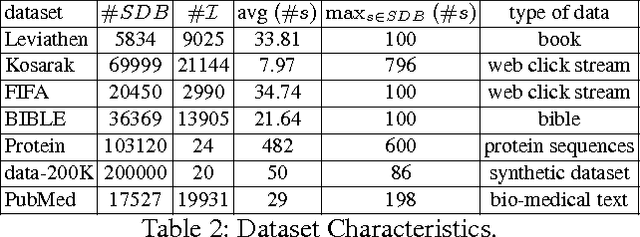

Abstract:Sequential pattern mining under constraints is a challenging data mining task. Many efficient ad hoc methods have been developed for mining sequential patterns, but they are all suffering from a lack of genericity. Recent works have investigated Constraint Programming (CP) methods, but they are not still effective because of their encoding. In this paper, we propose a global constraint based on the projected databases principle which remedies to this drawback. Experiments show that our approach clearly outperforms CP approaches and competes well with ad hoc methods on large datasets.
Discovering Knowledge using a Constraint-based Language
Jul 18, 2011



Abstract:Discovering pattern sets or global patterns is an attractive issue from the pattern mining community in order to provide useful information. By combining local patterns satisfying a joint meaning, this approach produces patterns of higher level and thus more useful for the data analyst than the usual local patterns, while reducing the number of patterns. In parallel, recent works investigating relationships between data mining and constraint programming (CP) show that the CP paradigm is a nice framework to model and mine such patterns in a declarative and generic way. We present a constraint-based language which enables us to define queries addressing patterns sets and global patterns. The usefulness of such a declarative approach is highlighted by several examples coming from the clustering based on associations. This language has been implemented in the CP framework.
 Add to Chrome
Add to Chrome Add to Firefox
Add to Firefox Add to Edge
Add to Edge